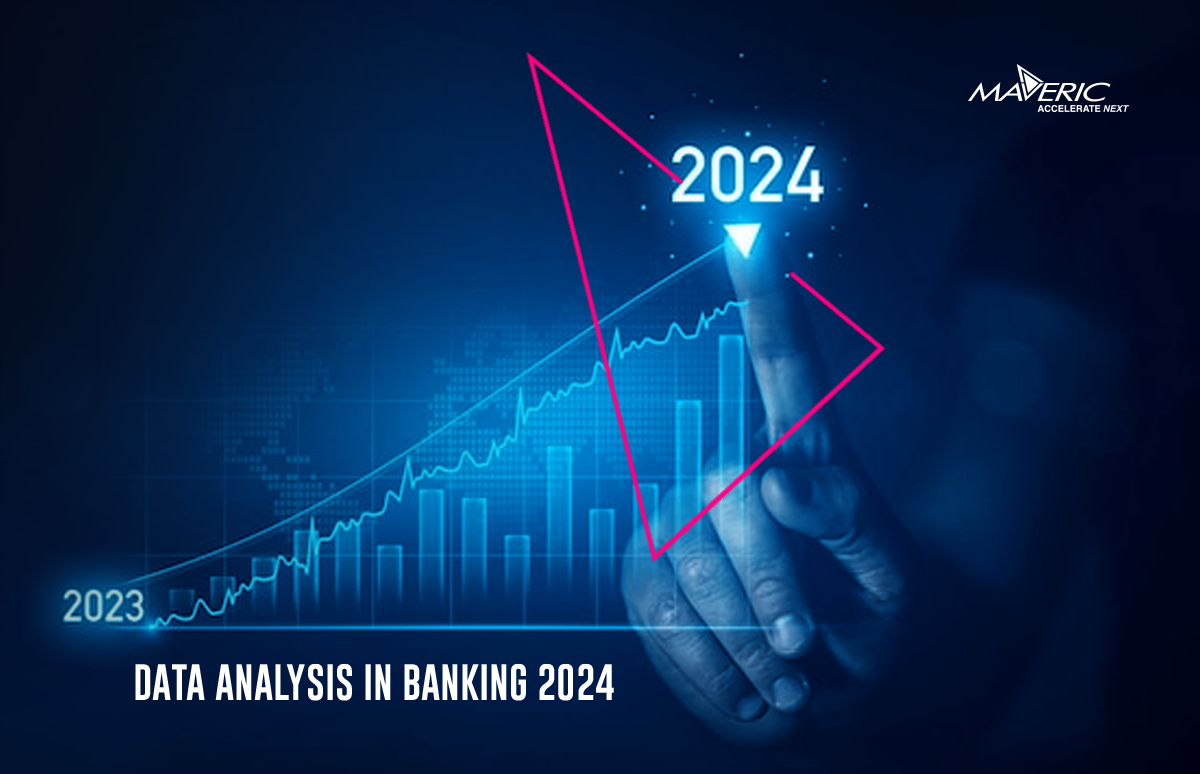In today’s digital age, data analysis has become an indispensable tool for the banking industry. As we look ahead to 2024, its crucial role will continue to grow. From fraud detection to customer insights, data analysis provides valuable insights that drive informed decision-making and enhance operational efficiency in the banking sector.
Banks constantly seek an edge to attract and retain customers in a highly competitive landscape. Data analysis empowers them to understand customer needs and preferences better, enabling personalized and targeted marketing campaigns that resonate with their audience. By harnessing the power of data, banks can optimize their product offerings and improve customer satisfaction, ultimately leading to increased loyalty and profitability.

The Future of Big Data in Banking
Data analysis is revolutionizing the banking industry, and its importance cannot be overstated. Banks deal with vast amounts of data daily, including customer information, transaction records, and market trends. By analyzing this data, banks can gain valuable insights to drive their business strategies and operations. Data analysis helps banks make data-driven decisions, optimize processes, and enhance overall performance.
In addition, data analysis enables banks to understand customer behavior and preferences more granularly. By analyzing customer data, banks can identify patterns and trends, allowing them to offer personalized and targeted products and services. This level of personalization not only enhances customer experience but also increases customer loyalty and satisfaction.
Data Analysis Trends in the Banking Industry
As we approach 2024, several data analysis trends shape the banking industry. One such trend is using artificial intelligence (AI) and machine learning (ML) algorithms. These technologies enable banks to analyze massive data volumes at an unprecedented speed, uncovering valuable insights in real-time. AI and ML algorithms can detect patterns, anomalies, and correlations that human analysts may not be able to identify, thereby enhancing fraud detection and risk management capabilities.
Another trend is integrating data analysis with customer relationship management (CRM) systems. Banks can comprehensively understand their customer base by combining customer data with analytics. This integration allows banks to tailor their marketing efforts, improve customer segmentation, and provide personalized recommendations, enhancing CX.
The Role of Data Analysis in Risk Management
Risk management is a crucial aspect of banking, and data analysis plays a crucial role in identifying, assessing, and mitigating risks. By analyzing historical data, banks identify potential risks and vulnerabilities in their systems to implement proactive measures to address these issues before they escalate. Data analysis also helps banks monitor transactions in real-time, detecting suspicious activities that may indicate fraudulent behavior.
Additionally, data analysis aids in credit risk assessment. By analyzing credit histories, financial records, and other relevant data, banks can assess the creditworthiness of borrowers more accurately. This ensures that loans are granted to individuals and businesses with a higher likelihood of repayment, reducing the risk of default and non-performing assets.
Enhancing Customer Experience Through Data Analysis
Customer experience is a critical differentiator in the banking industry, and data analysis is pivotal in improving customer satisfaction. By analyzing customer data, banks can gain insights into customer preferences, behaviors, and needs. Banks can offer personalized products, tailored recommendations, and customized services that resonate with their customers.
Furthermore, data analysis allows banks to improve their digital channels and user interfaces. By analyzing user data and feedback, banks can identify pain points and areas for improvement in their online and mobile banking platforms. This leads to a more intuitive and user-friendly customer experience, enhancing overall satisfaction and engagement.
Using Data Analysis for Fraud Detection and Prevention
Fraud is a constant threat in the banking industry, and data analysis is a powerful tool in detecting and preventing fraudulent activities. Banks can quickly identify potential fraud by analyzing transaction patterns, data anomalies, and other indicators. Advanced analytics and machine learning algorithms can detect suspicious activities that may go unnoticed by traditional rule-based systems.
Data analysis also enables banks to implement proactive measures to prevent fraud. Banks can identify patterns and trends by monitoring and analyzing historical fraud data, allowing them to develop robust fraud prevention strategies. This proactive approach helps banks stay one step ahead of fraudsters and safeguard their customers’ assets and information.
Challenges and Opportunities in Data Analysis for Banks
While data analysis presents numerous opportunities for banks, it also comes with its own set of challenges. One of the main challenges is data quality and integrity. Banks deal with vast amounts of data from various sources, and ensuring the accuracy and reliability of this data is crucial for practical analysis. Data governance frameworks and data validation processes are essential to maintain data quality.
Another challenge is data privacy and security. Banks handle sensitive customer information, and ensuring the privacy and security of this data is vital. Despite these challenges, data analysis presents significant opportunities for banks. With advancements in technology and analytics capabilities, banks can leverage data to gain a competitive edge, enhance customer experience, and drive business growth. Embracing data analysis as a strategic asset and investing in the necessary infrastructure and talent will position banks for success in the evolving digital landscape.
The Future of Data Analysis in Banking
As we look ahead to 2024 and beyond, the future of data analysis in banking is promising. Advancements in AI, ML, and big data technologies will continue revolutionizing how banks analyze and utilize data. Real-time analytics, predictive modeling, and prescriptive analytics will become more prevalent, enabling banks to make proactive decisions and anticipate customer needs.
Furthermore, integrating data analysis with emerging technologies such as blockchain and the Internet of Things (IoT) will create new opportunities for data-driven insights and innovation in banking. These technologies have the potential to enhance transparency, security, and efficiency in banking operations, further strengthening the role of data analysis in the industry.
Conclusion
Data analysis has become an indispensable tool for the banking industry, and its crucial role will continue to grow in 2024 and beyond. By leveraging the power of data, banks can gain valuable insights that drive informed decision-making, enhance operational efficiency, and improve customer satisfaction. Data analysis trends such as AI, ML, and integration with CRM systems are shaping the banking industry, enabling banks to transform their processes and deliver personalized customer experiences.
About Maveric Systems
Established in 2000, Maveric Systems is a niche, domain-led, BankTech specialist, transforming retail, corporate, and wealth management digital ecosystems. Our 2600+ specialists use proven solutions and frameworks to address formidable CXO challenges across regulatory compliance, customer experience, wealth management and CloudDevSecOps.
Our services and competencies across data, digital, core banking and quality engineering helps global and regional banking leaders as well as Fintechs solve next-gen business challenges through emerging technology. Our global presence spans across 3 continents with regional delivery capabilities in Amsterdam, Bengaluru, Chennai, Dallas, Dubai, London, New Jersey, Pune, Riyadh, Singapore and Warsaw. Our inherent banking domain expertise, a customer-intimacy-led delivery model, and differentiated talent with layered competency – deep domain and tech leadership, supported by a culture of ownership, energy, and commitment to customer success, make us the technology partner of choice for our customers































